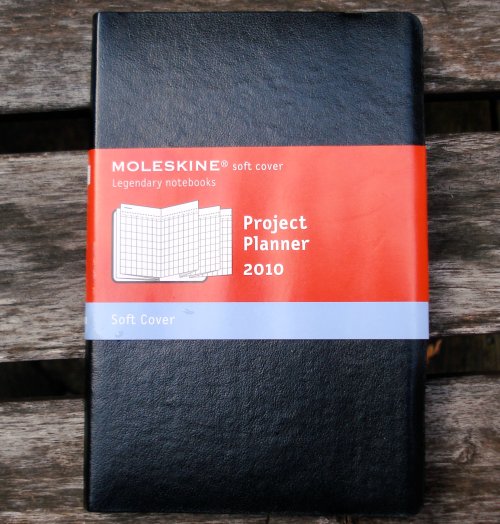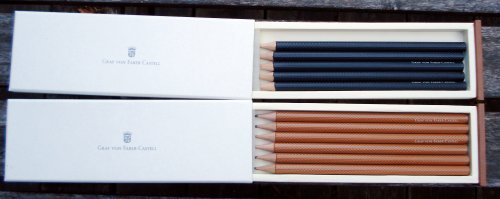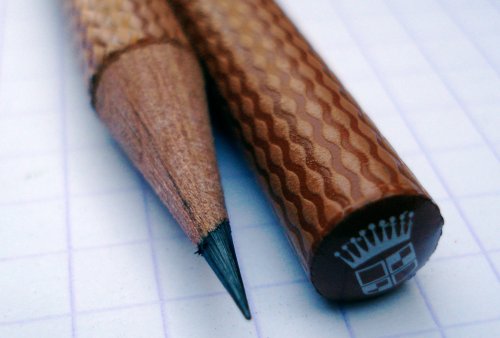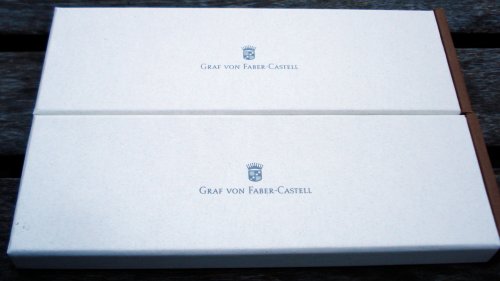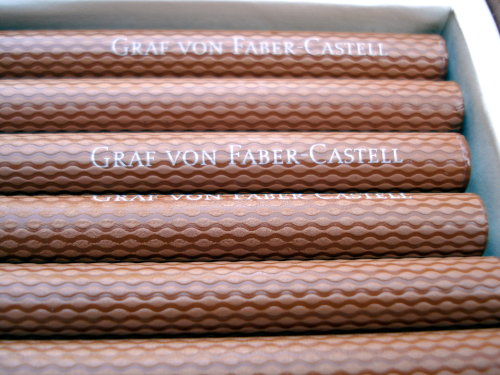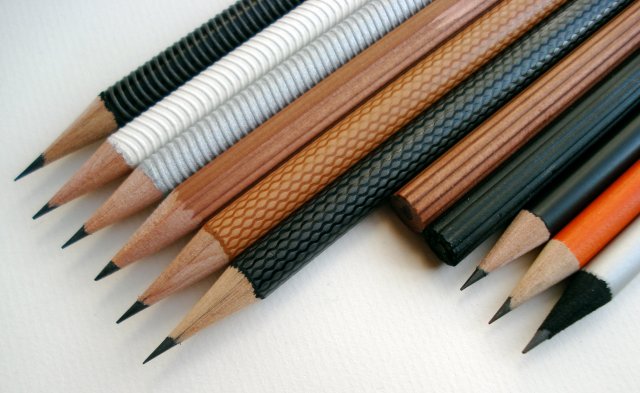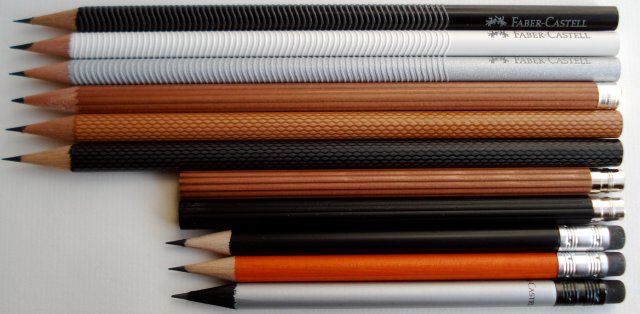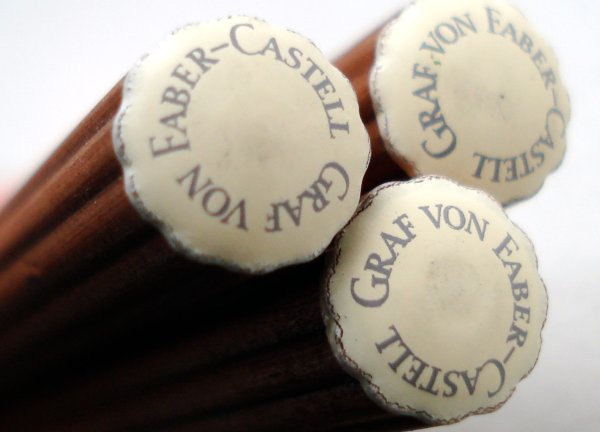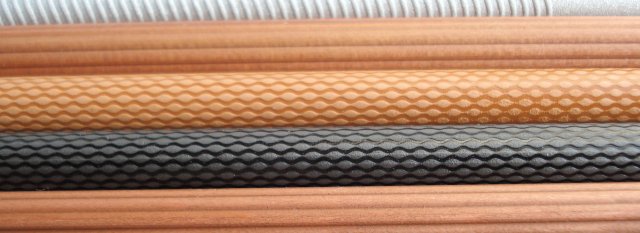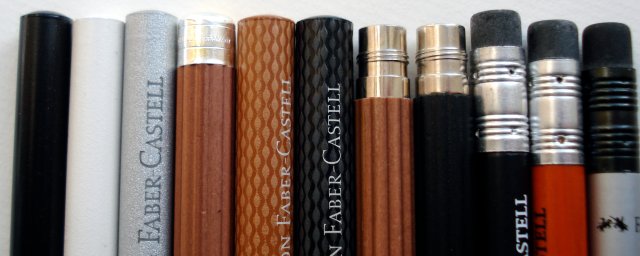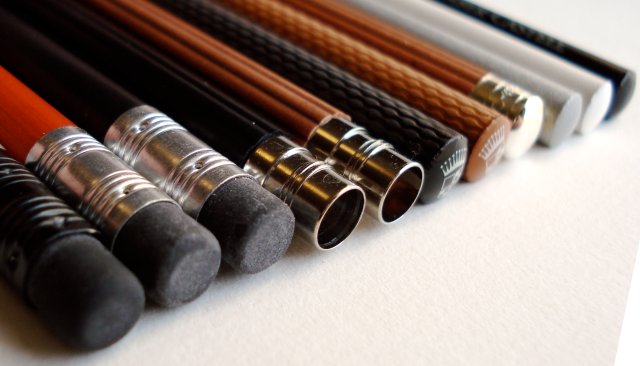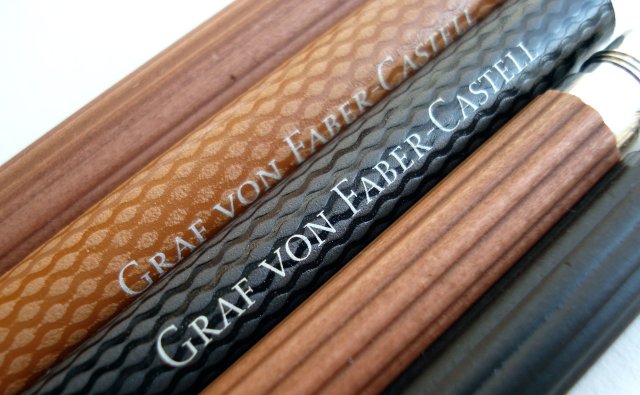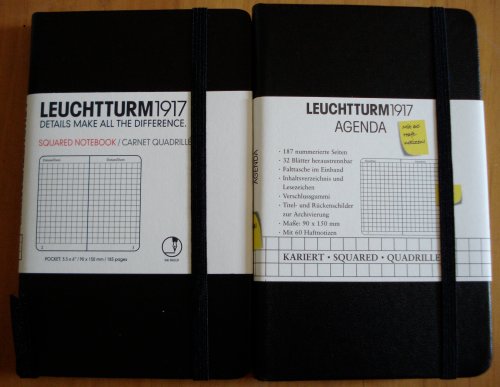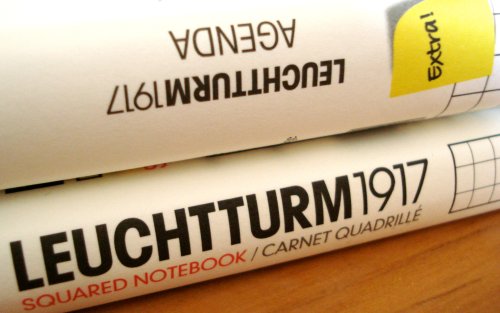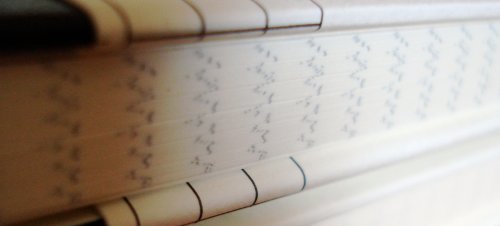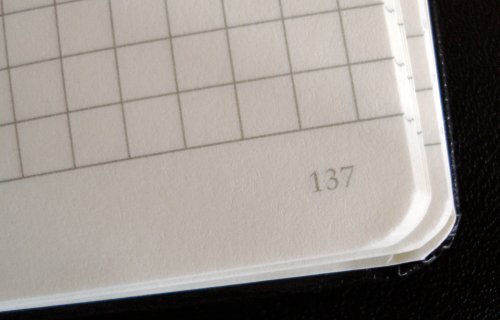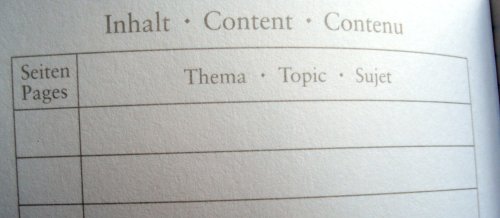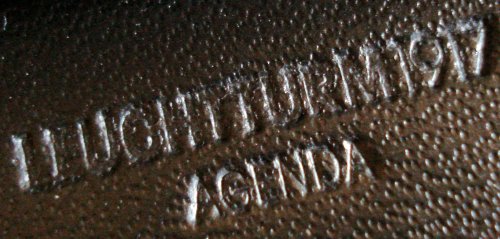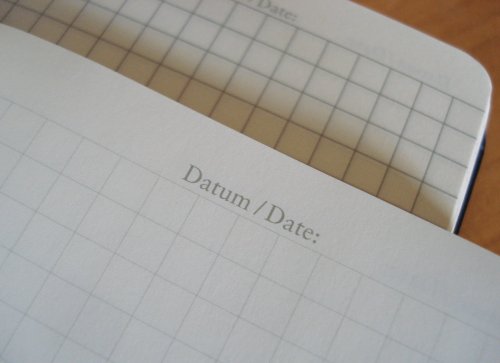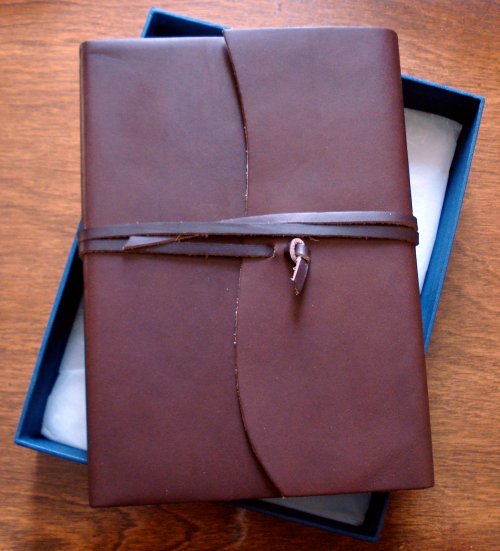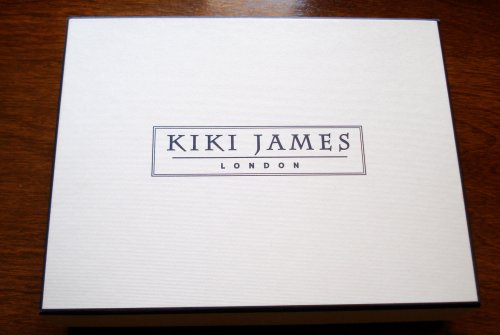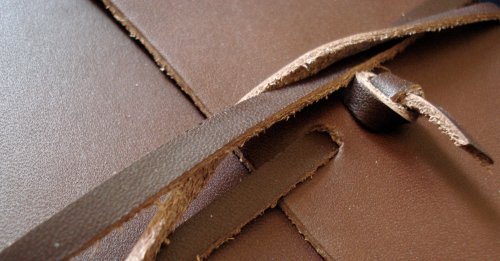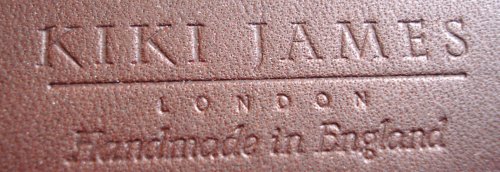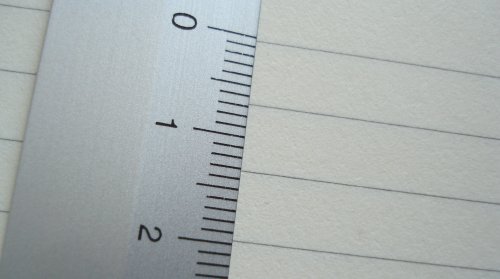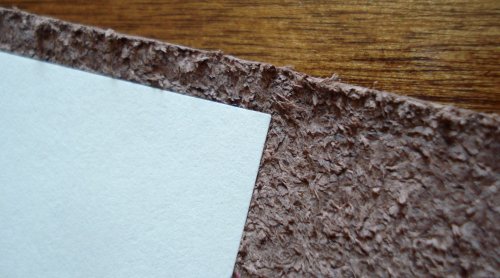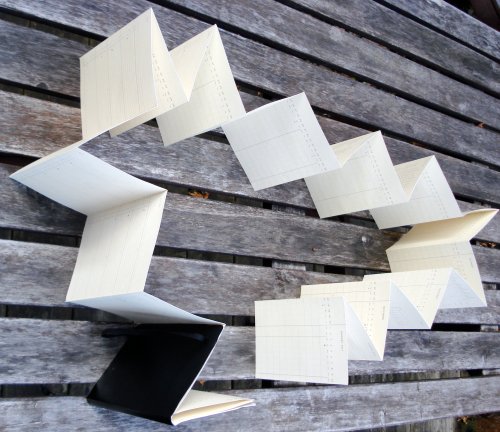
Talk about long accordion folds of paper! The Moleskine Project Planner is essentially a long zig-zag folded piece of paper inside the familiar Moleskine exterior – black cover, elastic band, pocket inside the back cover.
I would say it is very unusual, presenting a linear unbroken view of the calendar year.
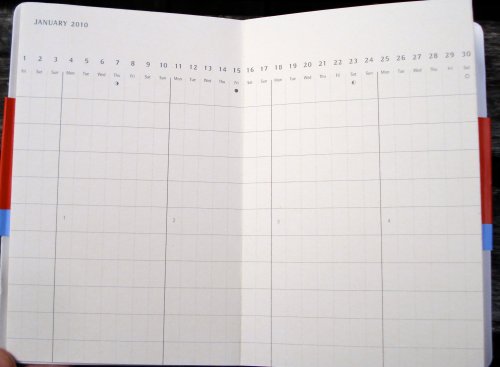
There are some problems, and I’m not sure how to make best use of it. Each day’s numeral has eleven rectangles below it – each of which is 6mm (horizontal) by 10mm (vertical). This isn’t enough space to write anything – maybe just a single character or a check mark. Presumably you would need a pre-existing colour or notation scheme to chart or record something.
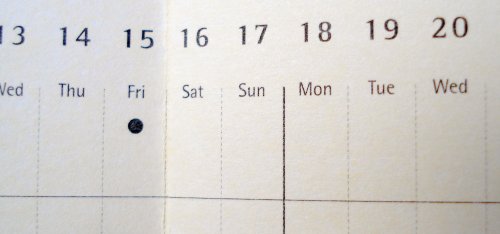
The reverse side does have an alternate calendar view with a 3.5mm ruled line that could take very small writing.
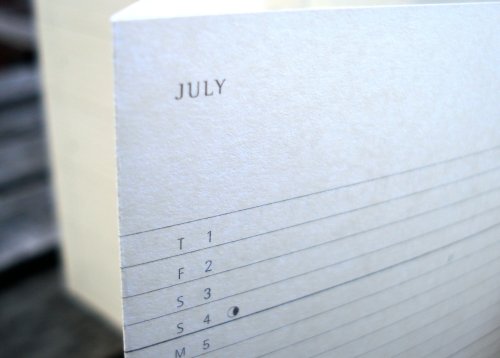
The reverse also has various “helpful” items such as international holidays. There is an error in the Canadian listing, which undermines my confidence in the other presented information.

Even if it is called a “project planner”, I can see the format being quite good for tracking personal information such as a budget or diet.
It has also made me think about this paper format – I’m wondering about where one could buy accordion folded thick paper. Moleskine’s Japanese Album is another product that I’ve always thought of as a sketchbook, and now realize could be quite useful for project planning.
The product is just somehow pleasantly clever.
